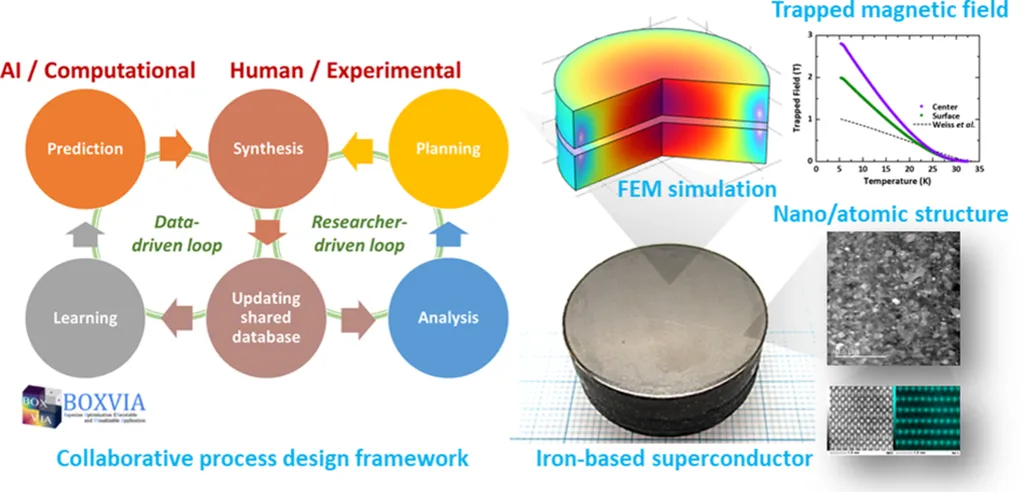In a significant stride towards enhancing the properties of iron-based superconductors, researchers led by Mohammad Azam at the Institute of High Pressure Physics (IHPP) of the Polish Academy of Sciences have optimized the synthesis conditions for the SmFeAsO₀.₈₀F₀.₂₀ (Sm1111) bulk superconductor. The study, published in the journal *Materials Research Express* (which translates to “Expressions of Materials Research”), leverages a cubic-anvil high-pressure (CA-HP) technique to push the boundaries of superconducting performance.
Superconductors, materials that conduct electricity without resistance, hold immense promise for the energy sector, from lossless power transmission to advanced magnetic storage systems. However, their practical applications are often limited by their transition temperatures and critical current densities. Azam and his team aimed to address these challenges by exploring high-pressure synthesis techniques.
The researchers employed both ex situ and in situ processes under pressures up to 4 GPa and temperatures reaching 1600 °C. Their findings revealed that a modest pressure of approximately 0.5 GPa was sufficient to form the Sm1111 phase via the ex situ process. In contrast, the in situ process required higher pressures and temperatures to achieve enhanced superconducting properties. “The in situ process under optimized conditions—1400 °C and 4 GPa for just one hour—significantly reduced the reaction time compared to conventional methods,” Azam explained. This optimization led to a notable increase in the transition temperature by 3 K and improvements in the critical current density (Jₖ).
The ex situ process, while maintaining an onset transition temperature of approximately 53 K, also showed a substantial enhancement in Jₖ, reaching values around 10⁴ A cm⁻² at 5 K. Despite these advancements, small amounts of impurity phases persisted in all samples, a challenge that even high-pressure techniques could not entirely eliminate.
The implications of this research are profound for the energy sector. Superconductors with higher transition temperatures and critical current densities could revolutionize power grids, magnetic resonance imaging (MRI) systems, and energy storage solutions. “This work provides a roadmap for further optimizing iron-based superconductors, bringing us closer to practical, large-scale applications,” Azam noted.
As the field of superconductivity continues to evolve, this study offers valuable insights for both fundamental research and applied technologies. The findings suggest that while high-pressure techniques can significantly enhance superconducting properties, the elimination of impurity phases remains a persistent challenge. Future research may focus on refining these techniques or exploring new synthesis methods to overcome this hurdle.
In the quest for more efficient and sustainable energy solutions, the work of Azam and his team represents a crucial step forward, highlighting the potential of high-pressure synthesis in unlocking the full capabilities of iron-based superconductors.

